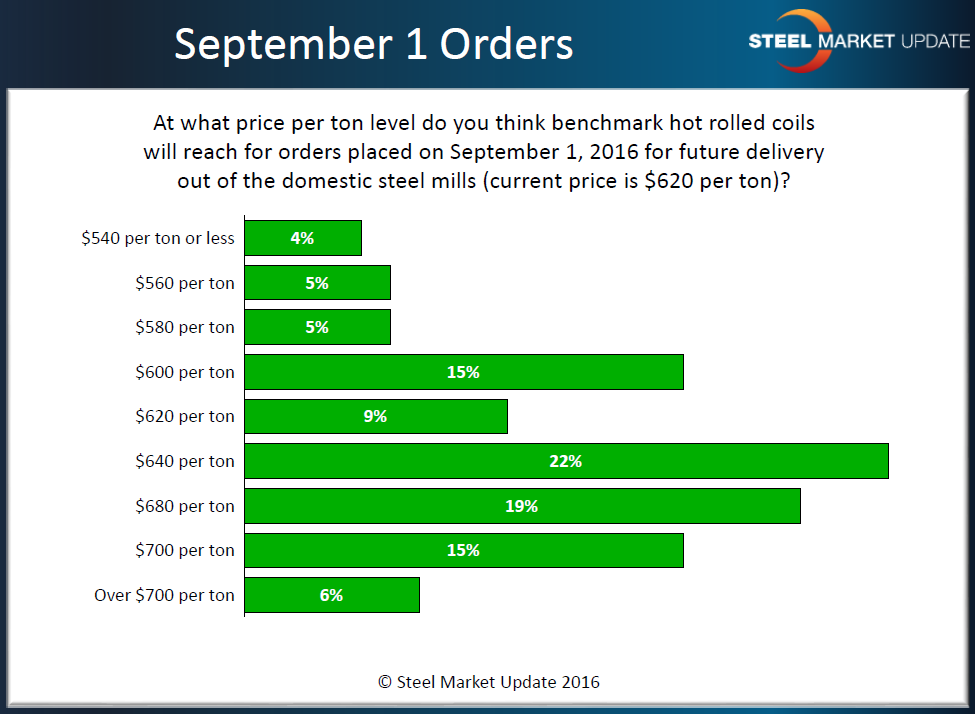SMU Data and Models

SMU Survey: More Flat Rolled Price Pressure to Come
Written by John Packard
May 22, 2016
Twice per month Steel Market Update (SMU) conducts our flat rolled steel market trends analysis. During the process we find out how buyers and sellers are feeling about their company’s ability to be successful in the current steel environment (SMU Steel Buyers Sentiment Index) and we probe many other areas of interest to those manufacturing, distributing or servicing the industry.
During last week’s analysis we asked our respondents as to what price level did they think benchmark hot rolled coil would reach on new orders placed for future delivery on September 1, 2016?
With our SMU HRC index now at $620 per ton, we found 62 percent of those responding believing prices would go higher from here. The largest grouping ranged from $640 to $700 per ton with 56 percent believing these levels will be reached by September 1st.
Comments made during the survey process:
“By then with Chinese and potentially global steel pricing being weak, the turn should already be started. Companies will find ways to import steel from new avenues.”
“I would expect the rapid rise start to slowdown over the coming months unless something happens to material availability being further restricted by the mills.”
“I would expect the rapid rise start to slowdown over the coming months unless something happens to material availability being further restricted by the mills.”
“I believe the Domestic Steel Mills are raising prices too much too soon. We all wanted higher prices but this is sticker shock. It is like they are making all of us pay for their 2015 losses from imports. Not Fair. Too Much, Too Soon.”

John Packard
Read more from John PackardLatest in SMU Data and Models

SMU Survey: Buyers’ Sentiment rebounds from multi-year low
Both of SMU’s Steel Buyers’ Sentiment Indices edged higher this week. Current Sentiment rebounded from a near five-year low, while Future Sentiment rose to a two-month high

SMU flat-rolled market survey results now available
SMU’s latest steel buyers market survey results are now available on our website to all premium members.

SMU Survey: Sheet lead times pull back after early-June blip, plate holds
Following the uptick seen two weeks ago, lead times eased this week for all four sheet products tracked by SMU, while plate lead times held steady, according to this week’s market survey.

SMU Survey: Pricing power abruptly shifts to steel buyers
The majority of steel buyers responding to our latest market survey say domestic mills are more willing to talk price on sheet and plate products than they were earlier this month. Sheet negotiation rates rebounded across the board compared to early June, while our plate negotiation rate hit a full 100%.

Service centers: Mill orders down marginally in May
SMU’s Mill Order Index (MOI) declined for a third straight month in May, but only marginally.

